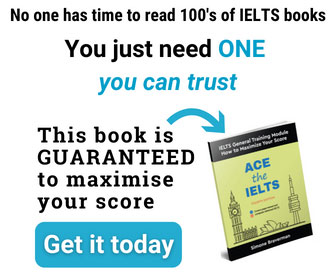As I promised to one of my most loyal visitors (hi, Dave!), this post is about efficient ways to improve your reading skills.
The Academic Reading module is a little bit different from the General Training – instead of 4 or 5 it has only 3 passages (more difficult ones). Actually, the first passage is usually the easiest and then they become more and more difficult. With that said, here come the tips:
Tip #1 – Don’t read the whole passage. Train yourself to scan and notice only the important information. After you go over the text for the first time, you should know what each paragraph is about, what its main idea is. This way of “reading” saves you a lot of priceless time.
Tip #2 – Watch your time closely. Don’t divide the 60 minutes you have into 3 equal parts of 20 minutes. Why? Because the last passage is the hardest and you are going to need more than 20 minutes to crack it. So I suggest 15 – 20 – 25, but feel free to look for any other timing that works for you.
Tip #3 – Don’t forget to copy your answers to the Answer Sheet. You can write them in the question booklet as you read the passage, but you get your score based on what is written in the Answer Sheet.
Tip #4 – If you can’t find an answer to a certain question – mark it with a big fat ??? so you can easily see it later and move on to the next one, don’t get stuck. Later you can get back, find all the question marks and try answering those questions again if you have time left.
Tip #5 – Count the words in your answer. If the instructions say “answer in 3 words” – you need to answer in EXACTLY 3 WORDS, when even an “a” and a “the” count as a word!
Tip #6 – When you practice, read your passage, answer the questions, compare your answers to the Answer Sheet and pay special attention to the wrong answers. You need to understand WHY you made those mistakes and remember them, so you won’t make them again.
And finally, these few tips came from “Ace The IELTS” e-Book (and of course there are more other tips, techniques and strategies). So those of you who need step-by-step guidance, a clear study plan and want to be ready for IELTS in ONE MONTH – take a closer look at it here. Think a little about how great it is, buy it, study, get your target score and forget all about IELTS 🙂


